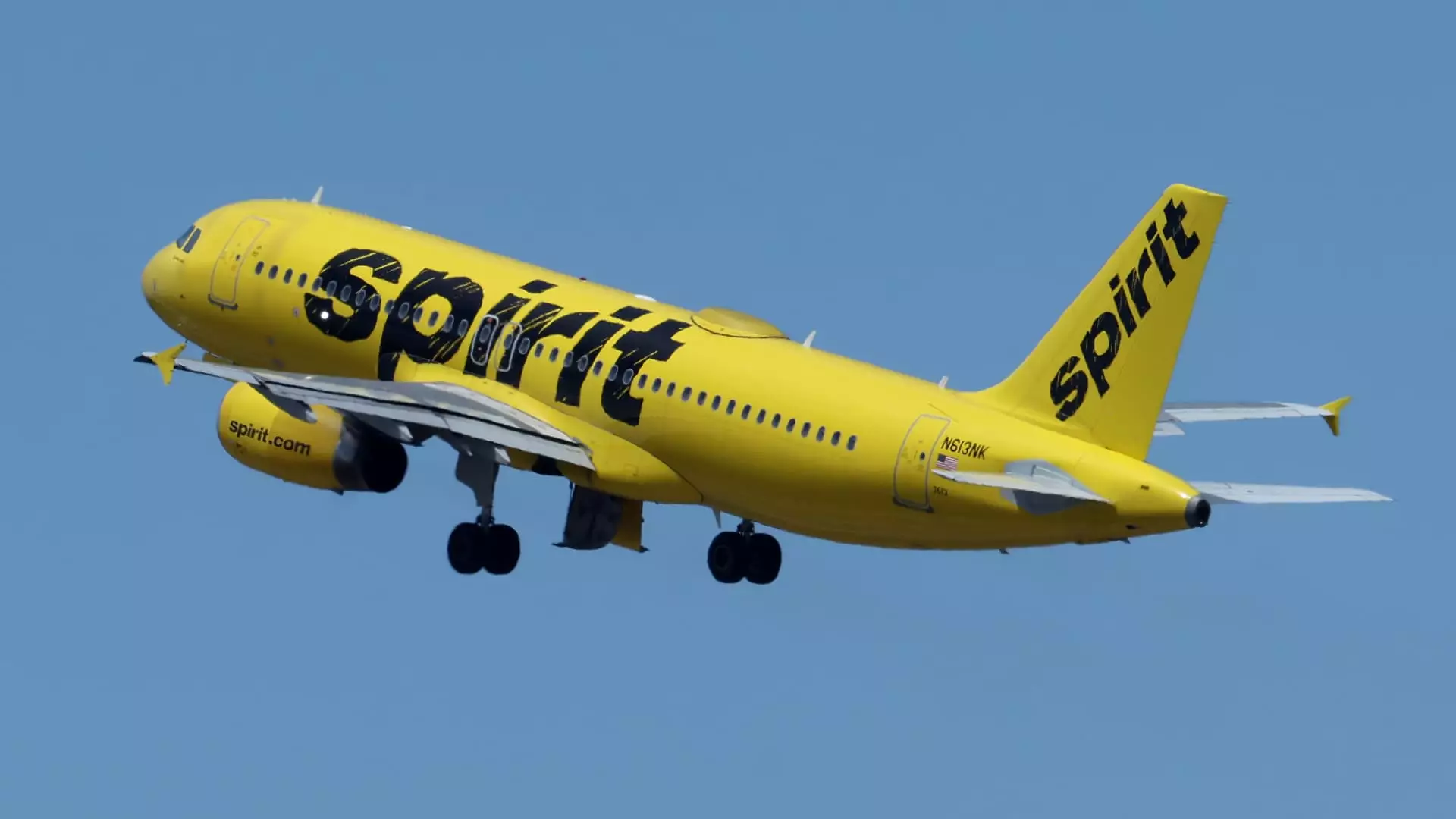Spirit Airlines, once celebrated for its bold yellow planes and no-frills, budget-friendly approach, seemed poised for a swift comeback after emerging from bankruptcy protection in March. Unfortunately for the carrier, this victory was short-lived, as external economic pressures and internal miscalculations quickly revealed vulnerabilities. The airline’s optimistic projections—forecasting a net profit of over half a billion dollars—began to look increasingly disconnected from reality when, just a few months later, it reported staggering losses amounting to nearly $257 million. Despite the blackout of profitability, Spirit appeared unprepared for the brutal realities of the post-pandemic aviation industry, revealing a glaring disconnect between strategic aspirations and operational resilience.
Ignoring Critical Structural Challenges
A significant factor behind Spirit’s recent struggles is its failure to confront core issues during its bankruptcy proceedings. Industry experts criticize the airline for not leveraging Chapter 11 protections to implement meaningful structural reforms. Instead of renegotiating aircraft leases or downsizing its fleet—a common approach for distressed carriers—Spirit’s management opted for a deal with bondholders that exchanged debt for equity. While this might have provided temporary relief, it failed to address the fundamental problem: an oversized fleet and high operational costs. In aviation, chance favors the prepared, and Spirit’s avoidance of tough decisions left it vulnerable to liquidity crunches and mounting cash burn, ultimately jeopardizing its long-term viability.
Market Realities and Competitive Pressures
The broader aviation landscape grew increasingly hostile to Spirit’s survival. When the company issued its warning about potential insolvency, the market responded with a stark reality check—Spirit’s shares tumbled nearly 60%. Meanwhile, competitors who maintained prudent financial stewardship and flexible operations saw their stocks rally. For Spirit, a key challenge was its high proportion of routes lacking competition—roughly 10% of its seats served on monopoly routes—yet such advantages could be fleeting amid financial distress. Additionally, aircraft lessors, sensing a weak hand, began reaching out to other airlines to offload Spirit’s roughly 200 Airbus planes, signaling declining confidence in the carrier’s ability to sustain its fleet.
Operational Struggles and Asset Stranding
Spirit’s operational fragility extends beyond financial metrics into tangible asset challenges. The airline’s fleet, primarily consisting of Airbus A321neos, has become a liability as lessors and competitors contemplate re-marketing or leasing these aircraft elsewhere. The high rental rates for Pratt & Whitney engines—rising about 50% from 2019—highlight the inflated costs that weigh heavily on Spirit’s cash flow. These cost increases, coupled with the grounded aircraft from engine recalls earlier in the year, underscore how technical issues and fleet management problems exacerbate financial woes. Experts argue that Spirit’s limited early efforts to re-negotiate leases or shed unprofitable aircraft have only deepened its crisis.
Leadership Shortcomings and Missed Opportunities
A critical reflection must be made on the leadership’s strategic choices—or lack thereof. Industry insiders believe Spirit’s management failed to utilize the tools available during bankruptcy proceedings to reposition itself more effectively. Instead of pursuing aggressive restructuring—including fleet downsizing, cost reductions, and operational streamlining—the airline relied on drawing out its existing business model, hoping external market conditions would improve. Such complacency mirrors a broader industry pattern where some carriers wait passively for market rebound instead of actively reshaping their organizations to survive downturns. The refusal or inability to make these tough restructuring decisions ultimately constrains Spirit’s recovery prospects.
Stakeholder Tensions and Future Uncertainty
Spirit’s precarious position is further complicated by mounting tensions with stakeholders. Employees and unions face an uncertain future, with hundreds of pilots and flight attendants already furloughed or on leave. The airline’s efforts to cut costs—selling assets, trimming unprofitable routes, and reducing staff—are necessary but also threaten to undermine the very value Proposition that made Spirit attractive to budget travelers. While the airline’s CEO emphasizes ongoing initiatives to preserve value and market share, doubts linger about whether these measures are sufficient, especially given the carrier’s fragile cash position and industry-wide capacity reductions.
Lessons for the Aviation Industry
Spirit Airlines embodies a cautionary narrative for the broader industry. Its story underscores the peril of overconfidence, strategic complacency, and underestimating market volatility. Airlines that emerge from bankruptcy are only as strong as the changes they implement during that tumultuous period; Spirit’s failure to seize the opportunity for radical restructuring leaves it exposed. As industry dynamics shift—costs rise, competition intensifies, and consumer behaviors evolve—the carriers that thrive will be those willing to make difficult, sometimes unpopular, decisions early on. Spirit’s predicament serves as a stark reminder that recovery is not guaranteed and that strategic agility and operational discipline are paramount for survival.
—
Note: This rewritten article critically examines Spirit Airlines’ recent struggles, emphasizing strategic shortcomings, market realities, and leadership errors. It presents a candid perspective on the airline’s miscalculations and offers insights into broader industry lessons, offering a fresh, insightful narrative distinct from the original source.


Leave a Reply